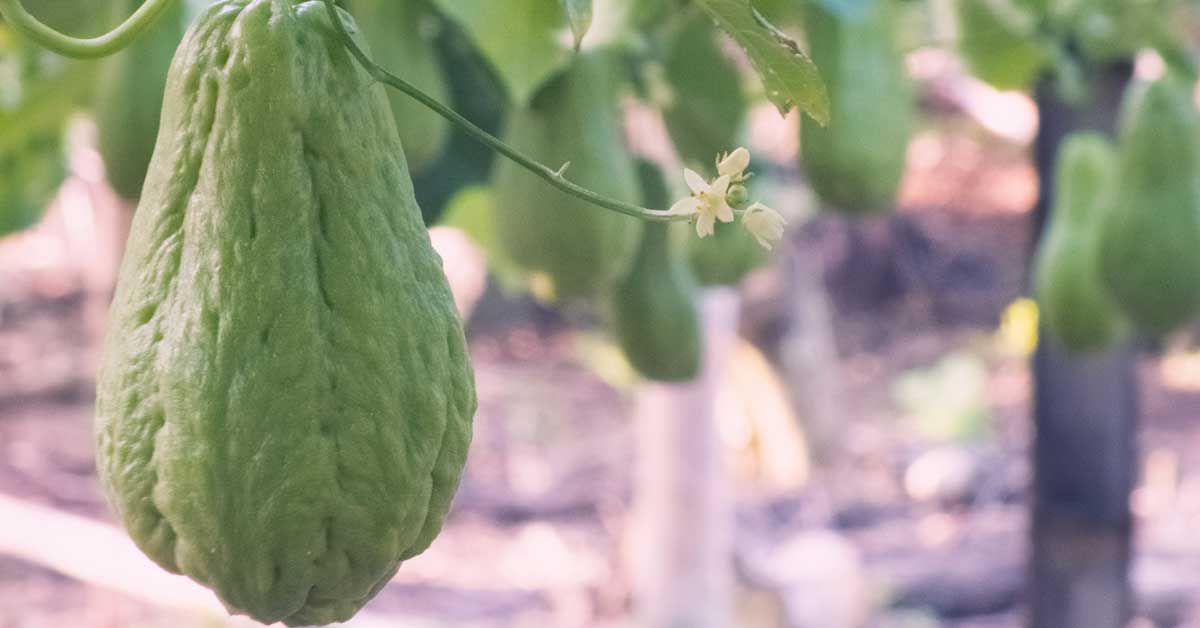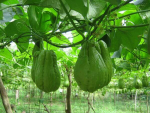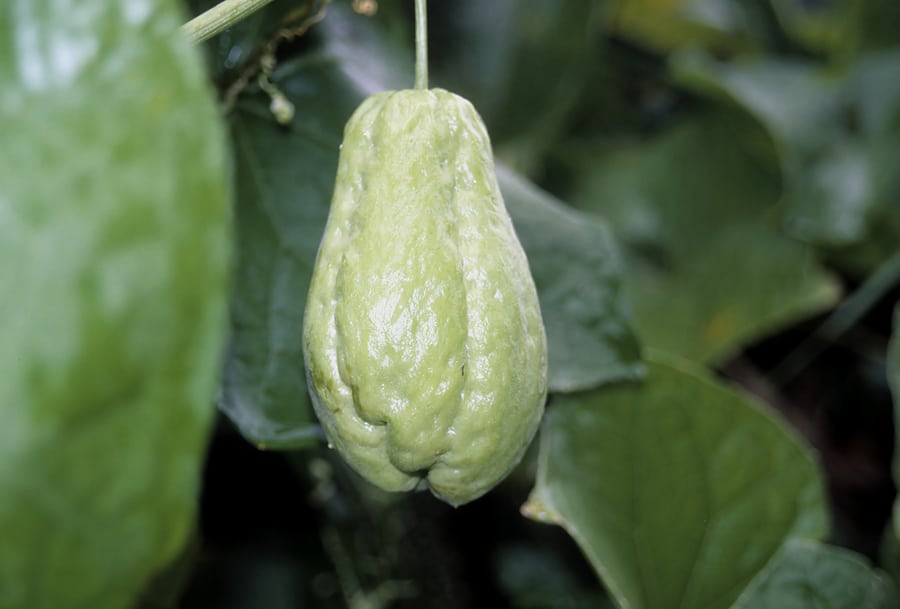China Connection
TB Fanatic
10 Impressive Benefits of Chayote Squash
Chayote (Sechium edule) is a type of squash that belongs to the gourd family Cucurbitaceae.
It originally hails from central Mexico and various parts of Latin America but is now grown all over the world. It’s also known as mirliton squash or chocho.
Chayote is loaded with an array of nutrients and antioxidant compounds that provide many potential health benefits.
Here are 10 impressive health benefits of chayote squash.
 Share on Pinterest
Share on Pinterest
1. Rich in nutrients
One of the greatest attributes of chayote squash is its nutrition content, as it offers various essential vitamins, minerals, and fiber.
A single chayote squash (203 grams) provides the following nutrients (1Trusted Source):
Alongside its nutrient density, chayote also happens to be low in calories, fat, sodium, and total carbs. As such, it’s quite healthy and makes for a good fit for various diets (1Trusted Source).
Many of chayote’s benefits may be attributed to its antioxidant content.
Antioxidants are compounds found in a variety of foods that protect against cellular damage, reduce inflammation, and lower stress within your body (2Trusted Source).
Chayote squash provides the antioxidants quercetin, myricetin, morin, and kaempferol (2Trusted Source).
Of these, myricetin occurs in the highest amounts. Research suggests that myricetin carries strong anticancer, antidiabetes, and anti-inflammatory properties (2Trusted Source, 3Trusted Source).
Additionally, chayote squash is an excellent source of vitamin C, which serves as an antioxidant in your body (4Trusted Source).
3. May promote heart health
Eating chayote squash may improve several heart disease risk factors, such as high blood pressure, high cholesterol, and poor blood flow.
Animal and test-tube research indicates that chayote compounds may help relax blood vessels, thereby improving blood flow and reducing blood pressure (5Trusted Source).
Myricetin, a prominent antioxidant in chayote squash, has also been shown to lower cholesterol in some animal studies (3Trusted Source).
Moreover, this squash is a good source of fiber, providing about 14% of the RDI. Higher intake of fiber-rich foods like chayote is associated with a reduced risk of heart disease (1Trusted Source, 6Trusted Source).
4. May promote blood sugar control
Chayote squash is low in total carbs and high in soluble fiber, which may help regulate blood sugar levels (7Trusted Source).
Soluble fiber slows down your digestion and absorption of carbs, which reduces your blood sugar response after eating (8Trusted Source).
Chayote may also improve blood sugar control by affecting insulin.
Insulin resistance is a condition that occurs when your cells become less sensitive to insulin — a hormone that regulates blood sugar levels.
This leads to progressively higher blood sugar levels and can eventually result in diabetes.
Research suggests that unique plant compounds in chayote may play a role in increasing your sensitivity to insulin by reducing the activity of enzymes linked to poor blood sugar control and type 2 diabetes (9Trusted Source).
Folate, or vitamin B9, is essential for all people — but it’s particularly important for those who are pregnant or planning to become pregnant.
During early pregnancy, folate is required for proper development of the fetal brain and spinal cord. Adequate folate intake may also play a role in preventing preterm births (10Trusted Source).
Chayote is an excellent source of folate, providing over 40% of the RDI in one squash (1Trusted Source).
Thus, including chayote and other folate-rich foods as part of a balanced diet is a great way to support a healthy pregnancy.
HEALTHLINE NEWSLETTER
Get daily nutrition guidance, made for you
We’ll send you evidence-based guidance from experts on nutrition to help you become your best self.
Enter your email
GET STARTED
Your privacy is important to us
6. May have anticancer effects
Higher fruit and vegetable consumption is associated with a reduced risk of various types of cancer, including those of the digestive tract (11Trusted Source).
Test-tube studies note that certain chayote compounds may slow the growth and progression of some cancer cells, such as those of cervical cancer and leukemia (12Trusted Source, 13Trusted Source).
Although these results are promising, current evidence isn’t strong enough to suggest that chayote has cancer-fighting effects in humans.
Ultimately, more research is needed.
One of the main theories of aging centers on molecules called free radicals that inflict damage on your cells, ultimately leading to reduced functionality over time (14Trusted Source).
Some research indicates that consuming foods high in antioxidants may slow the aging process by protecting cells from free radical damage (14Trusted Source).
Chayote squash happens to be full of antioxidants, one of which is vitamin C.
In addition to its antioxidant capacity, vitamin C is necessary for producing collagen, one of the primary proteins found in your skin. Collagen is often credited with giving skin its firm, youthful appearance (15Trusted Source).
Thus, adequate intake of vitamin-C-rich foods like chayote squash may help reduce visible signs of aging (15Trusted Source).
What’s more, a recent test-tube study revealed a strong protective effect of chayote extract on human skin cells against damage from UV radiation (16Trusted Source).
Ultimately, more research is needed on chayote and skin health.
Fatty liver disease is a condition in which excess fat is deposited into liver tissue. Too much fat in your liver can affect its ability to function properly (17Trusted Source).
Both test-tube and animal studies suggest that chayote squash extract may protect against fat accumulation in the liver, thus potentially preventing or treating fatty liver disease (18Trusted Source, 19Trusted Source).
In one study, rats fed a high-fat diet and treated with chayote extract had significantly lower cholesterol and fatty acid deposits in their livers than control rats. This was due to apparent changes in the function of enzymes involved in fat metabolism (19Trusted Source).
At this point, more research is needed to understand how chayote squash may support liver health in humans.
9. May promote a healthy weight
Chayote squash boasts very few calories but a lot of fiber — two attributes which can support a healthy weight (20Trusted Source).
A whole chayote squash (203 grams) provides 39 calories and 4 grams of fiber. Fiber slows down the rate at which your stomach empties, leaving you feeling full and satisfied for longer — which may decrease food intake and promote weight loss (1Trusted Source, 21Trusted Source, 22Trusted Source).
Moreover, research suggests that consumption of dietary fiber may increase fullness hormones like GLP-1 and peptide YY (23Trusted Source).
Thus, adding chayote squash to your diet may help you stay on track with your weight loss goals.
Your digestive tract is responsible for a variety of essential functions, including detoxification, immunity, and digestion and absorption of nutrients (24Trusted Source).
Consumption of fruits and vegetables like chayote squash can boost digestive function.
Flavonoids, plant compounds which support digestion, are found in high amounts in chayote (2Trusted Source).
Research indicates that flavonoid-rich foods aid digestive enzymes involved in the removal and excretion of waste products in your digestive tract (24Trusted Source).
What’s more, adequate intake of fiber-rich foods like chayote can encourage healthy intestinal function and maintenance of healthy gut bacteria.
In turn, these benefits promote bowel regularity and may play a role in preventing various chronic conditions, such as heart disease, type 2 diabetes, and colon cancer (25Trusted Source).

 www.healthline.com
www.healthline.com
Chayote (Sechium edule) is a type of squash that belongs to the gourd family Cucurbitaceae.
It originally hails from central Mexico and various parts of Latin America but is now grown all over the world. It’s also known as mirliton squash or chocho.
Chayote is loaded with an array of nutrients and antioxidant compounds that provide many potential health benefits.
Here are 10 impressive health benefits of chayote squash.

1. Rich in nutrients
One of the greatest attributes of chayote squash is its nutrition content, as it offers various essential vitamins, minerals, and fiber.
A single chayote squash (203 grams) provides the following nutrients (1Trusted Source):
- Calories: 39
- Carbs: 9 grams
- Protein: 2 grams
- Fat: 0 grams
- Fiber: 4 grams — 14% of the Reference Daily Intake (RDI)
- Vitamin C: 26% of the RDI
- Vitamin B9 (folate): 47% of the RDI
- Vitamin K: 10% of the RDI
- Vitamin B6: 8% of the RDI
- Manganese: 19% of the RDI
- Copper: 12% of the RDI
- Zinc: 10% of the RDI
- Potassium: 7% of the RDI
- Magnesium: 6% of the RDI
Alongside its nutrient density, chayote also happens to be low in calories, fat, sodium, and total carbs. As such, it’s quite healthy and makes for a good fit for various diets (1Trusted Source).
2. Contains potent antioxidantsSUMMARYChayote squash is high in many nutrients — especially folate (vitamin B9) — while low in calories, carbs, and fat.
Many of chayote’s benefits may be attributed to its antioxidant content.
Antioxidants are compounds found in a variety of foods that protect against cellular damage, reduce inflammation, and lower stress within your body (2Trusted Source).
Chayote squash provides the antioxidants quercetin, myricetin, morin, and kaempferol (2Trusted Source).
Of these, myricetin occurs in the highest amounts. Research suggests that myricetin carries strong anticancer, antidiabetes, and anti-inflammatory properties (2Trusted Source, 3Trusted Source).
Additionally, chayote squash is an excellent source of vitamin C, which serves as an antioxidant in your body (4Trusted Source).
SUMMARYChayote squash provides multiple antioxidants — including vitamin C and myricetin — that fight disease and promote health.
3. May promote heart health
Eating chayote squash may improve several heart disease risk factors, such as high blood pressure, high cholesterol, and poor blood flow.
Animal and test-tube research indicates that chayote compounds may help relax blood vessels, thereby improving blood flow and reducing blood pressure (5Trusted Source).
Myricetin, a prominent antioxidant in chayote squash, has also been shown to lower cholesterol in some animal studies (3Trusted Source).
Moreover, this squash is a good source of fiber, providing about 14% of the RDI. Higher intake of fiber-rich foods like chayote is associated with a reduced risk of heart disease (1Trusted Source, 6Trusted Source).
SUMMARYVarious plant compounds and fiber present in chayote make it a good choice for heart health. These compounds may improve blood flow while lowering blood pressure and cholesterol.
4. May promote blood sugar control
Chayote squash is low in total carbs and high in soluble fiber, which may help regulate blood sugar levels (7Trusted Source).
Soluble fiber slows down your digestion and absorption of carbs, which reduces your blood sugar response after eating (8Trusted Source).
Chayote may also improve blood sugar control by affecting insulin.
Insulin resistance is a condition that occurs when your cells become less sensitive to insulin — a hormone that regulates blood sugar levels.
This leads to progressively higher blood sugar levels and can eventually result in diabetes.
Research suggests that unique plant compounds in chayote may play a role in increasing your sensitivity to insulin by reducing the activity of enzymes linked to poor blood sugar control and type 2 diabetes (9Trusted Source).
5. May support a healthy pregnancySUMMARYFiber and plant compounds in chayote may contribute to stabilizing blood sugar and improving insulin sensitivity.
Folate, or vitamin B9, is essential for all people — but it’s particularly important for those who are pregnant or planning to become pregnant.
During early pregnancy, folate is required for proper development of the fetal brain and spinal cord. Adequate folate intake may also play a role in preventing preterm births (10Trusted Source).
Chayote is an excellent source of folate, providing over 40% of the RDI in one squash (1Trusted Source).
Thus, including chayote and other folate-rich foods as part of a balanced diet is a great way to support a healthy pregnancy.
SUMMARYChayote is an excellent source of folate, a nutrient required for proper fetal development. Therefore, the squash may have appeal for women who are pregnant or trying to become so.
HEALTHLINE NEWSLETTER
Get daily nutrition guidance, made for you
We’ll send you evidence-based guidance from experts on nutrition to help you become your best self.
Enter your email
GET STARTED
Your privacy is important to us
6. May have anticancer effects
Higher fruit and vegetable consumption is associated with a reduced risk of various types of cancer, including those of the digestive tract (11Trusted Source).
Test-tube studies note that certain chayote compounds may slow the growth and progression of some cancer cells, such as those of cervical cancer and leukemia (12Trusted Source, 13Trusted Source).
Although these results are promising, current evidence isn’t strong enough to suggest that chayote has cancer-fighting effects in humans.
Ultimately, more research is needed.
7. May slow visible signs of agingSUMMARYSome test-tube research indicates that compounds in chayote may have anticancer benefits, but more studies are needed.
One of the main theories of aging centers on molecules called free radicals that inflict damage on your cells, ultimately leading to reduced functionality over time (14Trusted Source).
Some research indicates that consuming foods high in antioxidants may slow the aging process by protecting cells from free radical damage (14Trusted Source).
Chayote squash happens to be full of antioxidants, one of which is vitamin C.
In addition to its antioxidant capacity, vitamin C is necessary for producing collagen, one of the primary proteins found in your skin. Collagen is often credited with giving skin its firm, youthful appearance (15Trusted Source).
Thus, adequate intake of vitamin-C-rich foods like chayote squash may help reduce visible signs of aging (15Trusted Source).
What’s more, a recent test-tube study revealed a strong protective effect of chayote extract on human skin cells against damage from UV radiation (16Trusted Source).
Ultimately, more research is needed on chayote and skin health.
8. May support liver functionSUMMARYChayote contains several antioxidants, including vitamin C, which may contribute to youthful-looking skin and reduce visible signs of aging.
Fatty liver disease is a condition in which excess fat is deposited into liver tissue. Too much fat in your liver can affect its ability to function properly (17Trusted Source).
Both test-tube and animal studies suggest that chayote squash extract may protect against fat accumulation in the liver, thus potentially preventing or treating fatty liver disease (18Trusted Source, 19Trusted Source).
In one study, rats fed a high-fat diet and treated with chayote extract had significantly lower cholesterol and fatty acid deposits in their livers than control rats. This was due to apparent changes in the function of enzymes involved in fat metabolism (19Trusted Source).
At this point, more research is needed to understand how chayote squash may support liver health in humans.
SUMMARYTest-tube and animal research indicates that chayote squash extract may reduce fat accumulation in your liver, potentially protecting against fatty liver disease. However, more studies are needed.
9. May promote a healthy weight
Chayote squash boasts very few calories but a lot of fiber — two attributes which can support a healthy weight (20Trusted Source).
A whole chayote squash (203 grams) provides 39 calories and 4 grams of fiber. Fiber slows down the rate at which your stomach empties, leaving you feeling full and satisfied for longer — which may decrease food intake and promote weight loss (1Trusted Source, 21Trusted Source, 22Trusted Source).
Moreover, research suggests that consumption of dietary fiber may increase fullness hormones like GLP-1 and peptide YY (23Trusted Source).
Thus, adding chayote squash to your diet may help you stay on track with your weight loss goals.
10. May support digestive healthSUMMARYChayote is low in calories and high in fiber, which can aid weight loss and maintenance by helping you feel fuller for longer.
Your digestive tract is responsible for a variety of essential functions, including detoxification, immunity, and digestion and absorption of nutrients (24Trusted Source).
Consumption of fruits and vegetables like chayote squash can boost digestive function.
Flavonoids, plant compounds which support digestion, are found in high amounts in chayote (2Trusted Source).
Research indicates that flavonoid-rich foods aid digestive enzymes involved in the removal and excretion of waste products in your digestive tract (24Trusted Source).
What’s more, adequate intake of fiber-rich foods like chayote can encourage healthy intestinal function and maintenance of healthy gut bacteria.
In turn, these benefits promote bowel regularity and may play a role in preventing various chronic conditions, such as heart disease, type 2 diabetes, and colon cancer (25Trusted Source).
SUMMARYFlavonoids and fiber in chayote boost various functions of your digestive tract, including healthy gut bacteria and bowel regularity.

10 Impressive Benefits of Chayote Squash
Chayote is a green, bumpy squash with a mild taste and multiple beneficial effects. Here are 10 impressive benefits of chayote squash.













